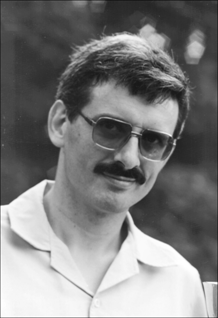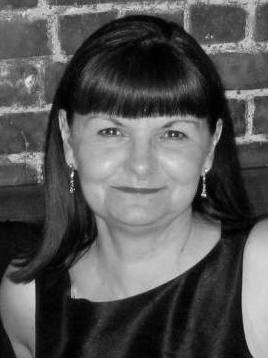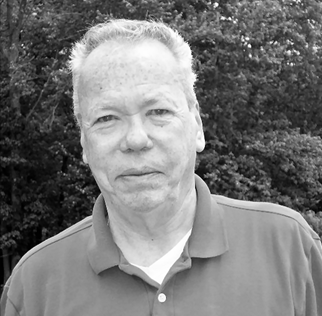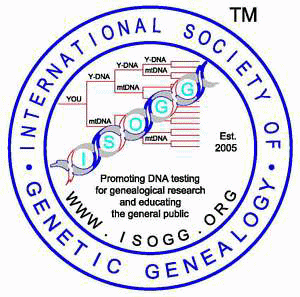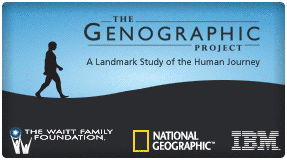The Project Team | The Project Objectives | How Does It Work? | Why Participate?
The project commmenced in Winter 2003 and is currently administered by a team of three officers of the Flannery Clan: Lorcán J. O'Flannery (Dublin), Maureen Wlodarczyk (New Jersey), and Mike Flannery (Rhode Island), who share the tasks and responsibilities according to available time and other resources. All three officers are participants (directly or indirectly) in the project, and are well acquainted with the testing process and results.
|
|
|
|
| Lorcán J. O'Flannery Co-administrator Y-DNA Project |
Maureen Wlodarczyk Co-administrator Y-DNA Project |
Mike Flannery Co-administrator Y-DNA Project |
New participants are sought and enrolled all year round and the project results are usually updated on a quarterly basis.
Our project aims to achieve the following goals :-
- To identify distinct DNA groups to verify the conventional theory that modern-day Flannerys and Flannellys descend from three distinct regional septs,
namely Ó Flannabhra of Connello barony in County Limerick (the Munster Flannerys), Ó Flannabhra of Tirawley barony in County Mayo
(the Connaught Flannerys), and Ó Flannghaile of Tireragh barony in County Sligo (the Connaught Flannellys).
- To identify the sept(s) from which the Flannerys of North Clare, Galway, South Mayo and Kerry are descended.
- To identify the sept(s) from which the Flanarys of the Appalachians (and other significant migrant groups) are descended.
- To verify the extent to which the Flannellys have become absorbed by the Flannerys.
- To assist all participating clan members to identify their personal origins, both by connecting to other members and by connecting to one
of the distinct regional septs.
- To provide summary data to assist national and international studies in genetic genealogy.
We are delighted to report that the project has proved to be very successful so far.
The tests are self-administered cheek swab tests conducted by each participant in the comfort of their own home. There are no trips to the hospital or blood samples! The testing agency is FamilyTreeDNA based in Texas, who are technically supported by the University of Arizona. The test costs approximately EUR 120 (US$150) and takes about two months for the lab to process. It is called the "37 markers Y-DNA test".
Each participant receives a simple cheek swab test kit by post, and collects a sample by gently swabbing the inside of the mouth to remove some dead skin cells. The sample is popped into screw-topped capsules and returned by post to the lab. It's quick and easy, and the test kit comes with clear instructions. The project team is available to answer queries at any stage.
Whilst the sample is being processed by the lab, the participant's family tree is reviewed and researched by the project team. It is often at this stage that additional information arises to extend the family tree.
Each test result is a 37 digit code number that is then compared to the other codes in the project using sophisticated software. The closer the match, the closer the kinship. Participants are notified of close matches and ancestral information shared for comparison wherever possible. All results are posted up on the website, together with pictorial charts that clarify kinship, but the results are identified only by kit number to safeguard privacy.
Many of our members have recognised the importance of this pioneering project and have either taken the test or made a donation to enable others to take the test. One of the great tragedies of Irish history was the dispersal of families and the loss of family records and culture. Modern technology has enabled us to fit the pieces of the great jigsaw puzzle together, and reunite kinfolk who might have no other means of tracing their roots. Members with little or no information can immediately find their place in the great family tree, and establish a connection with both historical and modern-day kinfolk. Members with more complete information can derive the greatest satisfaction from helping their long-lost kinfolk to find their way home, and from playing their part in this important international project.
It is not necessary to understand the scientific theory behind the project (in the same way that it is not necessary to understand the scientific theory behind the internal combustion engine in order to drive a car), but the following links provide a crash course on the basic technology to suit all levels. Don't forget to contact the team if you have any queries about any aspect of the project.
Theory (beginners) | Theory (intermediate) | Theory (advanced)
Reports | Tabulated Results | Charts | How to take part
